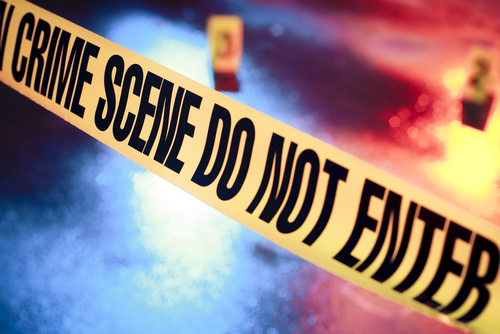
Every day hundreds of people take part in Jack the Ripper guided walks, exploring the very streets that Jack terrorised in an attempt to relive the greatest unsolved murder mystery of them all. But in 130 years much has changed. Here, we take the first in a series of looks at what happened to these now notorious, frequently visited locations.
Cobbled Gunthorpe Street, more than any other location, still evokes the grime of 1888 Whitechapel, particularly when viewed from the narrow entrance on Whitechapel High Street. George Yard Buildings, scene of the murder of Martha Tabram, were taken over by Toynbee Hall as residences and offices a few years after the murder and were ultimately demolished in the 1970’s and replaced by the modern Sunley House, which served the same purpose. A few years ago, Sunley House was itself demolished to make way for a new residential development which, when completed, will also front onto Wentworth Street, named London Square. Interestingly, a small piece of College Buildings, erected in the 1880’s, still stands on Wentworth Street and is being incorporated into the new project. Although the Wentworth Street end is very modern, the true atmosphere of the Ripper’s time can still be experienced as one enters the street at the White Hart Pub.
The scene of Mary Ann Nichols’ murder, for some, the first committed by the Ripper, is now a noisy and busy construction site as part of the new Crossrail project. It was renamed Durward Street in the 1890’s in an attempt to shrug off the notoriety given to it by the murder. The warehouses and terraced homes that once lined it were pulled down in the 1970’s as part of ongoing slum clearance projects and the whole site remained derelict and vacant for many years, save for Essex Wharf (directly opposite the murder site) and the tall 1870’s board school. In the 1990’s a new school, Swanlea, was constructed on the north side and new residential blocks appeared to the south soon after, but the school building was saved from the wrecker’s ball and became apartments – now known as Trinity Hall. It is the only building remaining from 1888, yet the street, when clear, is a quiet and atmospheric place to visit by night, despite the modernity that surrounds it.
This shabby-three storey home was where Annie Chapman’s horribly mutilated body was found in the yard on the morning of 8th September 1888. In 1970, the site was cleared to make way for extensions to the Truman Brewery, which remains to this day. In recent years, following the brewery’s closure, parts of the existing building were redeveloped into small shop units and although there is, once again, a 27 and 31 Hanbury Street, it was impossible to open up the relevant section where 29 once stood. However, this section has still been given a street number and a large 29 sits proudly in the spot where the infamous house used to be.
In 1967, the actor James Mason visited No.29 for a scene in the cult movie ‘The London Nobody Knows’ and in it, he goes through the front door and through the passage into the yard to speak of the Ripper murders. The sequence, which also includes other Spitalfields locations nearby, can be found on Youtube and is a fascinating snapshot of times past – in colour!
Why not see for yourself? Book yourself on to the number one Jack the Ripper guided tour. Visit us online or call us on 07803 067544 for more information.